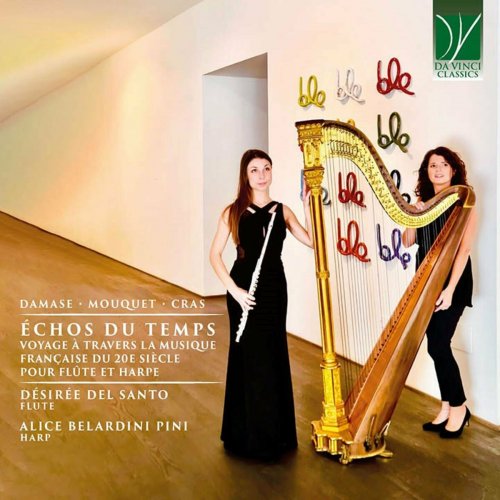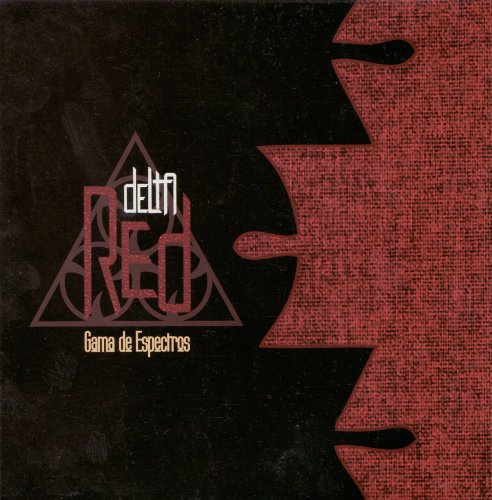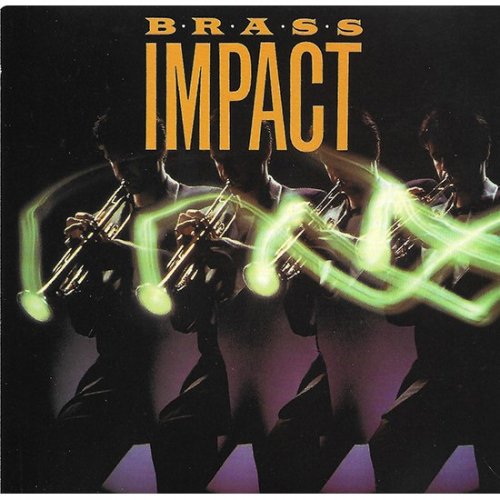Désirée Del Santo - Échos du temps - Voyage à travers la musique française du 20e siècle pour Flûte et Harpe (2024)

Artist: Désirée Del Santo
Title: Échos du temps - Voyage à travers la musique française du 20e siècle pour Flûte et Harpe
Year Of Release: 2024
Label: Da Vinci Classics
Genre: Classical
Quality: FLAC (tracks)
Total Time: 52:37 min
Total Size: 231 MB
WebSite: Album Preview
Tracklist:Title: Échos du temps - Voyage à travers la musique française du 20e siècle pour Flûte et Harpe
Year Of Release: 2024
Label: Da Vinci Classics
Genre: Classical
Quality: FLAC (tracks)
Total Time: 52:37 min
Total Size: 231 MB
WebSite: Album Preview
01. Sonate No.1 for Flûte and Harp: I. Allego moderato
02. Sonate No.1 for Flûte and Harp: II. Andante con moto
03. Sonate No.1 for Flûte and Harp: III. Allegro vivo
04. Sonate No.1 for Flûte and Harp: IV. Adagio - Presto
05. Divertissement Grec for Flûte and Harp, Op. 23: I. Lydienne
06. Divertissement Grec for Flûte and Harp, Op. 23: II. Dorienne
07. Divertissement Grec for Flûte and Harp, Op. 23: III. Phrygienne
08. Pavane à cinq temps, for Flûte and Harp
09. Suite en duo, for Flûte and Harp in A-Flat Major: I. Preambule: Modéré
10. Suite en duo, for Flûte and Harp in A-Flat Major: II. Modéré
11. Suite en duo, for Flûte and Harp in A-Flat Major: III. Assez Lenz
12. Suite en duo, for Flûte and Harp in A-Flat Major: IV. Dans a onze temps: Tres anime
Late 19th and first half of the 20th century French music production is characterized by a taste for sophisticated melodies, refined and unusual timbral mixtures. The influence of composers such as Debussy and Ravel is deep and widespread, but the more avant-garde experimentation, as to be found in the rarefied atmospheres and rhythmic fluidity of musique d’ameublement, is also an undeniable element in the fin de siècle French soundscape.
In this context, the flute and harp duo plays a significant and prominent role. The timbral blend, already popular among post-Mozartian German composers at the turn of the 19th century, owes its best literature precisely to the late 19th-century French composers, who captured its potential (aprés Debussy).
A booster to the flute’s potential were the technological innovations made by Theobald Böhm (1794 – 1881), flutist and inventor, son of a Bavarian goldsmith. More appreciated in France than in his homeland, Böhm’s flute paved the way for a true “flute revolution,” led by the genius of great teachers and musicians, including Paul Taffanel (1844 – 1908), who succeded to Henri Altès (1826 -1895) in the chair of flute at the Paris Conservatory in 1893. Through his method and performance style, Taffanel greatly contributed to the improvement of the flute’s tonal and interpretive abilities and raised a new generation of flute-soloists. Under his far-sighted leadership and that of other great teachers, such as Philippe Gaubert (1879 – 1941) and Marcel Moyse (1889-1984), the French flute school made extensive progress in the emission technique, giving the instrument – hitherto limited by faint timbre, inconsistency among registers and inaccurate intonation – new sonority, power and expressiveness. These characteristics, which won the flute vast popularity, are perfectly depicted in theis repertoire.
In this context, the flute and harp duo plays a significant and prominent role. The timbral blend, already popular among post-Mozartian German composers at the turn of the 19th century, owes its best literature precisely to the late 19th-century French composers, who captured its potential (aprés Debussy).
A booster to the flute’s potential were the technological innovations made by Theobald Böhm (1794 – 1881), flutist and inventor, son of a Bavarian goldsmith. More appreciated in France than in his homeland, Böhm’s flute paved the way for a true “flute revolution,” led by the genius of great teachers and musicians, including Paul Taffanel (1844 – 1908), who succeded to Henri Altès (1826 -1895) in the chair of flute at the Paris Conservatory in 1893. Through his method and performance style, Taffanel greatly contributed to the improvement of the flute’s tonal and interpretive abilities and raised a new generation of flute-soloists. Under his far-sighted leadership and that of other great teachers, such as Philippe Gaubert (1879 – 1941) and Marcel Moyse (1889-1984), the French flute school made extensive progress in the emission technique, giving the instrument – hitherto limited by faint timbre, inconsistency among registers and inaccurate intonation – new sonority, power and expressiveness. These characteristics, which won the flute vast popularity, are perfectly depicted in theis repertoire.
![Doris Day - The Very Best of Doris Day (2015) [Hi-Res] Doris Day - The Very Best of Doris Day (2015) [Hi-Res]](https://www.dibpic.com/uploads/posts/2026-01/1768662733_cover.png)






![Woo - Whichever Way You Are Going, You Are Going Wrong (Expanded Edition) (2026) [Hi-Res] Woo - Whichever Way You Are Going, You Are Going Wrong (Expanded Edition) (2026) [Hi-Res]](https://www.dibpic.com/uploads/posts/2026-01/1768384154_gjaj7otcbs28a_600.jpg)
![NOHMI - Brightness & Darkness (2026) [Hi-Res] NOHMI - Brightness & Darkness (2026) [Hi-Res]](https://www.dibpic.com/uploads/posts/2026-01/1768922635_folder.jpg)